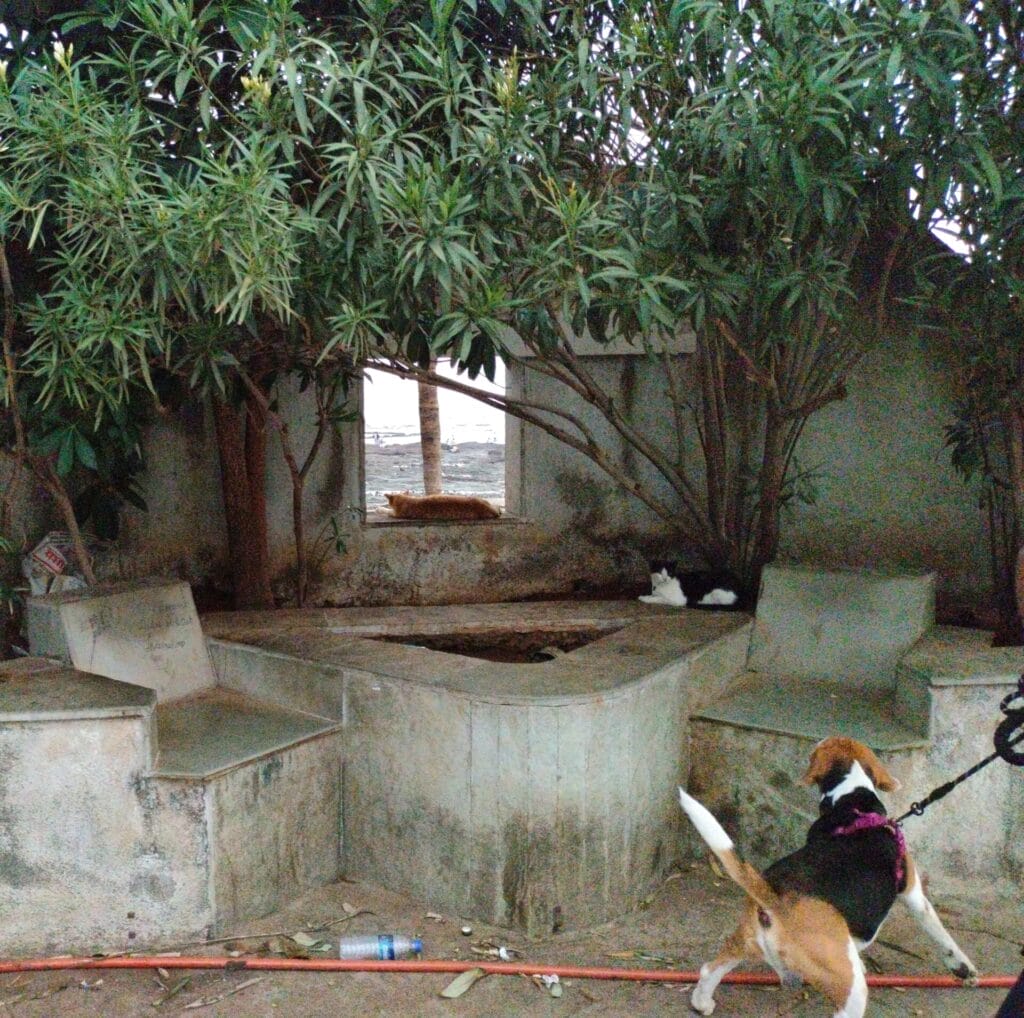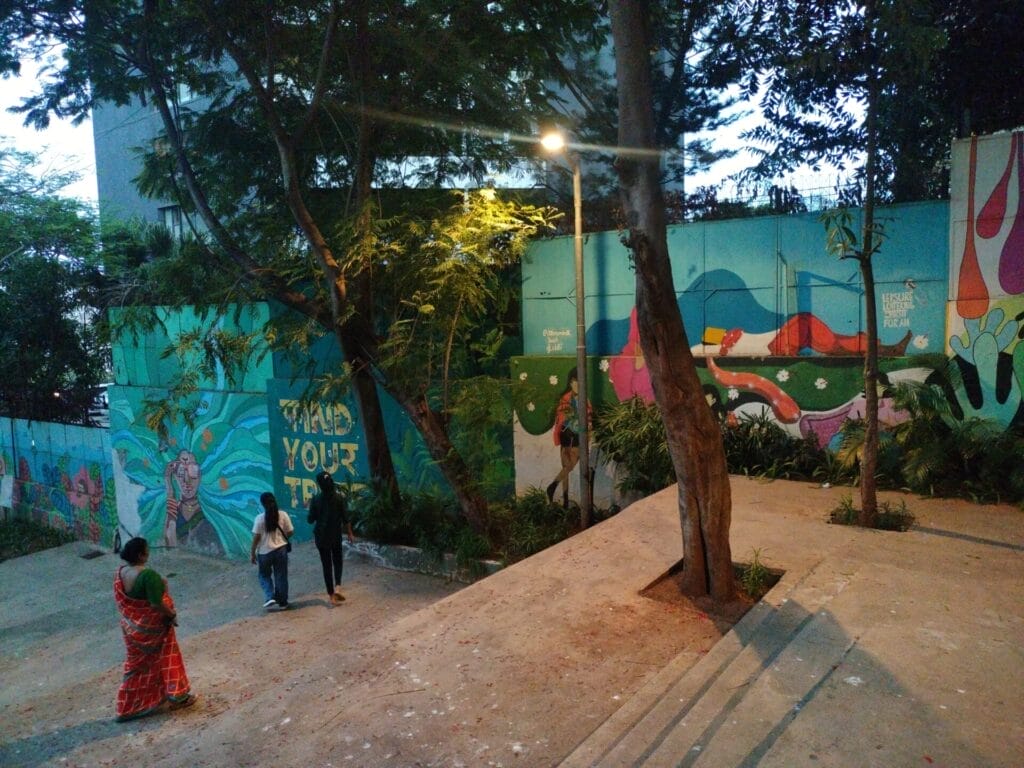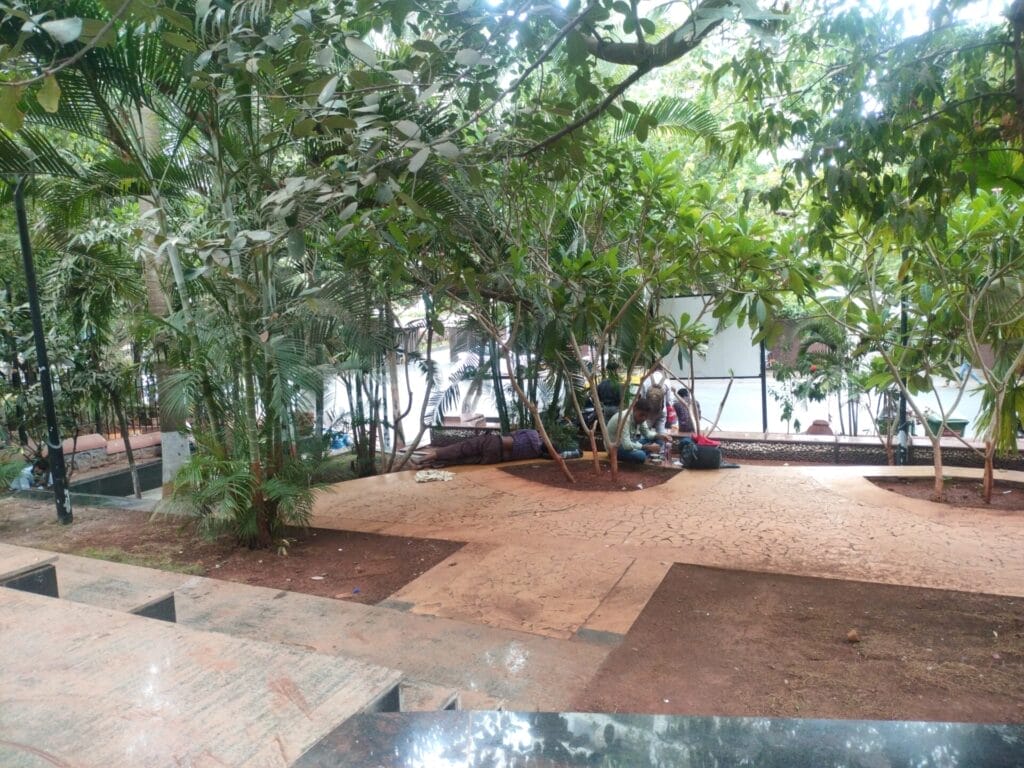A survey conducted in 2021 by Project Mumbai, a non-governmental organisation, and Ministry of Mumbai’s Magic collective in conjunction with MCGM found that there is only 1.24 sqm of open space per person in Mumbai. But, the draft Development Plan 2034, which aims to shape the growth of Mumbai over 20 years, earmarks 2 sqm per person.
Public space is a precious resource in the urban realm. According to research conducted by UN-Habitat, well-managed cities have 50% of their area allotted for open spaces — a pipe dream for Mumbai. An environment that fosters recreation, rest and community bonding is hardly a priority when the average living space per person in Mumbai is around 8.3 sqm.
And yet, it is vital for individual and social well-being — whether in the form of safe playing areas for children and their caregivers, nooks to foster dialogue and discussion, a respite from cramped living conditions, a spot for contemplation or reading, a vibrant art hub, or a place for couples to snatch moments of intimacy.
Civic activists, architects and designers in Mumbai along with the BMC are revamping tiny, unused spots into green hubs of activity.
Small interventions, big results
“In a city like Mumbai, to create large open places is challenging because of the space constraints and the dynamics of the city,” says Asif Zakaria, former BMC corporator from the H-West ward. During Asif’s tenure, the corporator’s funds were used to transform the steps on Mount Mary Road, which is often used as a thoroughfare opposite St. Stephen’s Church, into a safe and open multi-purpose space.
Traffic islands, junkyards or even thoroughfares can fulfil the city’s need for open areas. Dhawal Ashar, Program Head – Integrated Transport at World Resources Institute (WRI), says while citing the example of the HP Junction at the intersection of Turner Road, SV Road and Linking Road in Bandra, “Generally people’s reaction is — where’s the space? But on close observation by experts, who are trained to see these things, we realised there’s a lot of it.” These pockets, if recognised and designed well, offer multi-dimensional solutions to a space-starved city.
Read more: Mumbai: City planning leaves few open spaces for citizens to breathe free
Requirements of the land and the design
Not much is needed in terms of square footage for such interventions. “A horizontal surface should do the trick,” says Jaideep Mulye, an architect and design practitioner. He was a part of the Busride Design Studio, which worked on the renovation of some areas of the Carter Road promenade.

Busride Studio turned a part of the promenade, which previously had some calisthenics equipment and a small green patch into a recreation area. It is split into cosy seating areas designed in semicircles, thus fostering inclusivity and ease of conversation. The seating nooks flows around the calisthenic equipment.
Although the area is small, it invites a variety of users into the space. For instance, the designers’ research showed that a social worker conducts classes for under-privileged children on the promenade. The designers also wanted to create a spot for the students of nearby Rizvi College to hang out, or people from the settlements at Khar Danda to find a quiet space to wind down.
The challenge to designing such community areas might also lie in the lay of the land. Take the steps connecting Tertullian Road to Mount Mary Road in Bandra, which were used as a thoroughfare. They were earmarked in the Development Plan (DP) for a road — an impractical proposition considering the incline.

From dump to inclusive corner
The steps had turned into a garbage dump strewn with syringes as drug users and peddlers would gather there. It needed a plan, which would maintain its functional purpose while imbuing it with other uses.
“We made it universally accessible. So, a wheelchair user or a child in a pram can access the space,” explains Alan Abraham of Abraham John Architects, who carried out the work on the steps. Now, the place has ramps too. There are three levels of community areas, where people gather for activities and the walls are decorated with art. Moreover, because of the buzz, drug users have stopped using it as their haunt.
Read more: Citizens’ forum draws up plan for more open spaces in Mumbai
When John Abraham Architects presented the proposal to the BMC their brief was that it should be easy to maintain and clean. Monik Shah of Compartment S4 also speaks about ease of maintenance as an important driver of the design when they worked on a similar project at Napean Sea Road, turning a flight of dilapidated steps into a public plaza called Napean Greens. The space was designed with elements which are easy to maintain, will suffer minimal wear and tear, and cannot be stolen since the space is open twenty four-seven. Hence there are no steel benches, and the seating has been made using stones like Lakha red granite and Jaisalmer granite.
The necessity for neighbourhood interventions
A space becomes a ‘place’ with the experiences and narratives associated with it, which in turn are created by the activities that take place there and the people who occupy it. Hence, the place belongs to those who have access to it, making accessibility an important element of place-making. In this context, open recreational areas that are accessible round-the-clock are particularly important for a city like Mumbai, where distribution of every kind of resource is skewed.
An afternoon visitor to Napean Greens will see people taking refuge from the heat, grabbing a quick nap on the lawn before going to work again, or having a bite. The calisthenic equipment on Carter Road allows those with no access to expensive gyms to exercise in the fresh air.

When such design principles are applied to traffic islands, they help both the traffic cops and people crossing the roads. The traffic island at the Kalanagar junction designed by WRI is an excellent example. It stands at the intersection of four roads resulting in a lot of foot traffic. The island offers a safe refuge for people crossing the road besides performing its original function of regulating traffic. It also offers benches for people who want to rest awhile.

While most of these places are not earmarked as parks or open spaces in the DP, with creative design they serve more than their original purpose.
A three-way partnership
For such projects to come to fruition, all the stakeholders’ involvement is crucial — the corporation, citizens and urban designers, who see the potential in the place. Political will sets things into motion. The area at Carter Road materialised with the funds provided by MLA Ashish Shelar. Alan gives full credit for the steps opposite St. Stephen’s Church to the BMC.
Read more: Why give open spaces for adoption when BMC has funds and authority, asks NAGAR
When Asif is asked if people can approach the BMC with designs for a project, he emphatically says, “Why not?” He reiterates what urban planners have also said — that the BMC has the funds.
Aakif Habib, a member of the Mount Mary Advanced Locality Management (ALM) believes citizen participation is imperative. He says, “The residents must be taken into confidence if there’s any such project. It should be an initiative of the residents.”
Need for citizen involvement
Asif echoes this sentiment, believing that we put the donkey before the cart — the plan is made and then the residents are involved. If the initiative comes from them then they will also take onus for its maintenance. Citizen participation is especially important because each area is different and the project must be informed by these differences.
However, some citizen groups may object to such plans, specifically those which give day and night access to such areas to everyone. P K Das, a pioneering voice in the field of public space says in his book co-written with Indra Munshi, On The Waterfront: Reclaiming Mumbai’s Open Spaces, that the presence of the poor or the working class in open spaces is usually considered a nuisance by the upper classes. This attitude may be seen in a few ALMs, which might want to gate-keep place-making.
Reflecting the idea seen in the image of people gathering under the canopy of a banyan tree for a chat, small spaces ask for very less — achievable even for space-deprived Mumbai.